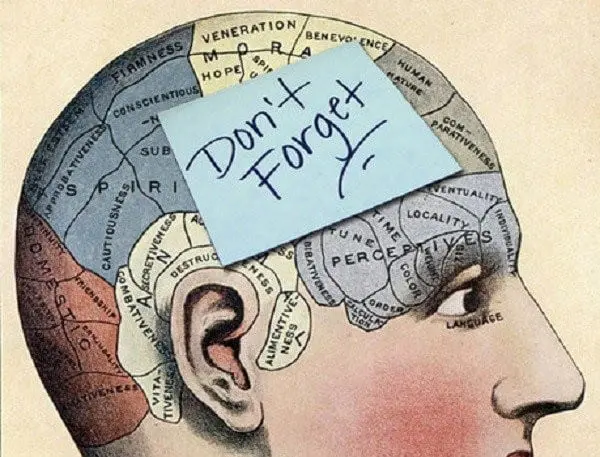
“Memory: the power or process of reproducing or recalling what has been learned and retained;…a particular act of recall or recollection.”
–Webster’s Ninth Collegiate Dictionary
“Memory is the mother of imagination, reason and skill…This is the companion, this is the tutor, the port, the library with which you travel.” –Mark Van Doren
“The true art of memory is the art of attention.” –Samuel Johnson
All of these definitions of memory have some truth to them. Your ability to remember relies on your storing and recalling previous experience. Yet it is enhanced by attention to the present moment.
The power of the human ability to remember is seldom noticed. We tend to be more aware of defects and limitations in remembering. Using the natural strengths of your adult brain, you will become aware of methods of learning and remembering that you thought you had forgotten.
One amazing memory skill that you constantly use is “chunking”. Our brains spontaneously group items of information that we remember as a single item. For example, a word is a chunk of letters, but it carries far more information than the sum of the letters. Yet we remember this “chunk” as easily as we recall the single unit.
Our memories also serve us well when they allow us to recall meaning more naturally than exact words. If you hear or read a sentence, you will probably forget the precise wording or specific details after a few seconds. But you will remember the content or meaning of the communication.
A final example to show the strength of your memory at this moment has to do with the power of visualization.
Imagine a tiny bee off in the distance.
Does it have a dark head or a light head?
Did you notice that you mentally “zoomed in”.
We tend to store images as if they were on film or tape. We projected the images when needed, then inspect them as if they had become real pictures.
The three memory forces described here—”chunking”, meaningfulness, and visualization are a few of the memory techniques that research supports as being profitable.
Hopefully, it will put you at ease to know that most, if not all, of the strategies for remembering are ones that you have often used. The trick is to apply the techniques to your academic coursework.

Be the first to comment